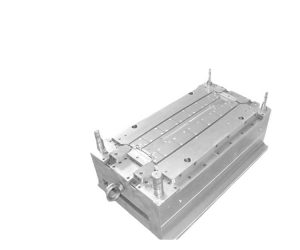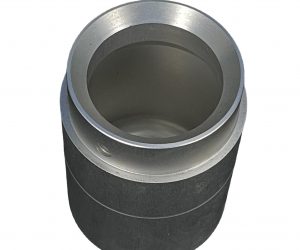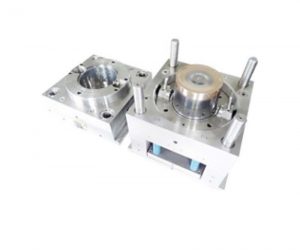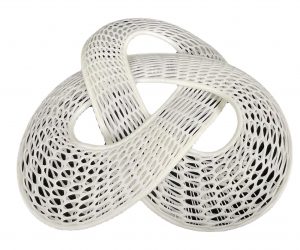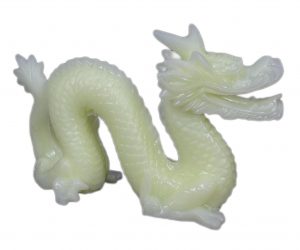Conventional injection molding, while ubiquitous, faces inherent limitations in producing complex geometries with consistent wall thickness and optimal material utilization. Water-assisted injection molding (WAIM), however, transcends these limitations, offering a paradigm shift in polymer processing characterized by enhanced efficiency, design flexibility, and superior part quality. This analysis delves into the intricate mechanics of WAIM, its multifaceted advantages, and its transformative impact across diverse manufacturing sectors.
The core principle of WAIM revolves around the strategic integration of a water-soluble polymer and pressurized water within the mold cavity. This isn't a simple displacement process; it's a dynamic interplay of fluid mechanics and polymer rheology. Initially, a water-soluble mandrel is injected, forming a precisely defined hollow core. Subsequently, high-pressure water is introduced, acting as a dynamic, internal pressure medium that forces the molten polymer against the mold walls. This controlled pressure application ensures complete mold filling, even in intricate geometries, resulting in parts with exceptional dimensional accuracy and surface finish. The subsequent cooling phase, facilitated by the inherent thermal conductivity of water, significantly accelerates solidification, leading to drastically reduced cycle times.
The benefits extend beyond mere speed and precision. WAIM facilitates the creation of lightweight, high-strength components by inherently incorporating hollow structures. This translates to substantial material savings, a critical factor in a world increasingly focused on sustainable manufacturing practices. Moreover, the resulting hollow sections offer advantageous thermal and acoustic insulation properties, broadening the applicability of WAIM to specialized domains requiring specific performance characteristics. The controlled cooling process minimizes residual stresses, thereby reducing the incidence of warpage and sink marks—common defects plaguing conventional injection molding.
The applications of WAIM are far-reaching, impacting sectors as diverse as automotive, consumer goods, and electronics. In the automotive industry, WAIM enables the production of lightweight yet robust structural components, such as intricately shaped door panels and instrument panels, contributing to improved fuel efficiency and vehicle performance. The consumer goods sector benefits from WAIM's ability to create aesthetically pleasing and functional items, ranging from durable water containers to complex toys with internal mechanisms. In electronics, WAIM facilitates the creation of high-precision casings for sensitive electronic devices, ensuring both structural integrity and effective thermal management.
However, WAIM is not without its challenges. The selection of appropriate water-soluble polymers, precise control of water pressure, and effective mold design are critical factors determining the success of the process. Furthermore, the post-processing steps, including the removal of the water-soluble mandrel and potential surface finishing, require careful consideration. Despite these challenges, the advantages of WAIM, particularly its ability to produce complex, lightweight, and high-quality parts with significantly reduced cycle times, firmly establish it as a transformative technology within the realm of polymer processing. Ongoing research and development efforts promise further refinements and wider adoption of this innovative technique across diverse industrial applications.
Water-assisted injection molding represents a significant departure from traditional injection molding, pushing the boundaries of what's achievable in plastic part fabrication. This isn't merely a refinement; it's a paradigm shift, introducing a complex interplay of fluid dynamics, heat transfer, and material science that yields both remarkable advantages and unforeseen challenges. This analysis will dissect the intricacies of WAIM, exploring its underlying principles, operational nuances, and the unpredictable consequences that shape its industrial applicability.
The core innovation lies in the strategic introduction of high-pressure water jets into the mold cavity during the injection process. This isn't a passive cooling mechanism; it's an active sculpting force. The precise choreography of water flow, meticulously calibrated to the mold geometry and the thermoplastic's rheological properties, dictates the final part's intricate hollow structure. The rapid cooling induced by the water isn't uniform; it creates localized thermal gradients that influence the molecular orientation and residual stresses within the polymer matrix, a factor often overlooked in simplistic analyses.
The operational complexities extend beyond the mere injection of water. Precise control over water pressure, temperature, and injection timing is paramount. Minute variations can lead to significant deviations in part quality, ranging from subtle dimensional inaccuracies to catastrophic structural failures. Furthermore, the design of the mold itself becomes a critical factor, demanding sophisticated computational fluid dynamics (CFD) simulations to predict and mitigate the chaotic behavior of the water jets within the confined space. The mold's intricate network of channels, strategically placed to ensure efficient cooling and prevent premature solidification, represents a significant engineering challenge.
The advantages of WAIM are undeniable, particularly in the realm of complex hollow parts. The ability to create thin-walled structures with intricate internal geometries, previously unattainable through conventional methods, opens up new avenues in lightweighting and design optimization. The accelerated cooling cycle translates directly into increased production throughput, a significant boon for high-volume manufacturing. However, this efficiency comes at a price.
The unpredictable nature of WAIM introduces significant challenges. The rapid cooling process, while advantageous, can induce substantial internal stresses, potentially leading to warping, cracking, or premature failure under load. These stresses aren't uniformly distributed; they are highly dependent on the intricate interplay of water flow, mold geometry, and polymer properties, making precise prediction a formidable task. Moreover, the specialized equipment and tooling required for WAIM significantly increase upfront investment costs, demanding a careful cost-benefit analysis before implementation.
The applications of WAIM are diverse and continually evolving. Industries ranging from automotive and aerospace to medical devices and consumer goods are exploring its potential. However, the unpredictable nature of the process necessitates rigorous testing and validation for each specific application. The success of WAIM hinges not only on the technology itself but also on the expertise required to manage its inherent complexities and mitigate its potential pitfalls. It is a technology that demands a deep understanding of both the theoretical principles and the practical limitations. The future of WAIM lies not just in its technological advancements, but in the development of robust predictive models and sophisticated control systems that can harness its power while mitigating its inherent unpredictability.
Introduction
Injection molding is one of the most widely used methods for manufacturing plastic parts. It involves injecting molten plastic into a mold cavity, where it cools and solidifies into the desired shape. However, conventional injection molding has some limitations, such as difficulty in producing hollow parts, high material consumption, long cycle times, and high residual stresses.
To overcome these challenges, various alternative techniques have been developed, such as gas assisted injection molding, foam injection molding, and water assisted injection molding. Among these, water assisted injection molding is a relatively new and promising technology that has gained increasing attention in recent years.
What is Water Assisted Injection Molding?
Water-assisted injection molding is like an upgraded version of gas-assisted injection molding. Instead of using gas, it uses water to push the melted material around. The main idea is pretty simple: you start by injecting a small amount of melted stuff into the mold, then you add water. This water pushes the melted stuff to fill up all the spaces and creates a hollow part inside.
This method has some cool benefits compared to using gas. For example, the water can be pushed through with more force, it's less sticky than gas, it cools things down better, it's friendlier to the environment, and it's cheaper. But, it also comes with some tricky parts. The molds need to be more complex, the water needs to be really clean, there's a bigger chance of rusting and leaking, and it's harder to control how the water moves through the mold.
How Does Water Assisted Injection Molding Work?
The process of water assisted injection molding can be divided into four stages: melt injection, water injection, water holding, and water removal.
Melt Injection
In this stage, a predetermined amount of melt is injected into the mold cavity at high speed and pressure. The melt should be enough to fill the cavity partially and form a skin layer along the mold wall. The thickness of the skin layer depends on the melt temperature, injection speed, mold temperature, and material properties.
Water Injection
In this stage, pressurized water is injected into the melt through a nozzle or a pin. The water displaces the melt from the core and pushes it to fill the remaining cavity. The water forms a hollow channel inside the part, which can have various shapes and sizes depending on the mold design and process parameters. The water pressure should be higher than the melt pressure to overcome the resistance of the melt flow.
Water Holding
In this stage, the water pressure is maintained until the part is sufficiently cooled and solidified. The water acts as a cooling medium that transfers heat from the melt to the mold. The cooling time depends on the part geometry, material properties, water temperature, and water flow rate.
Water Removal
In this stage, the water pressure is released and the water is drained out of the part through a vent or a valve. The part is then ejected from the mold. The water can be recycled or disposed of according to environmental regulations.
Advantages and Disadvantages of Water Assisted Injection Molding
Water assisted injection molding has several advantages over conventional injection molding and gas assisted injection molding:
- It can produce hollow parts with complex geometries and thin walls that are difficult or impossible to achieve by other methods.
- It can reduce material consumption and weight by eliminating unnecessary solid sections.
- It can reduce cycle time and energy consumption by enhancing cooling efficiency.
- It can reduce residual stresses and warpage by minimizing differential shrinkage.
- It can improve mechanical properties and surface quality by reducing sink marks and weld lines.
- It can reduce environmental impact and cost by using water instead of gas.
However, water assisted injection molding also has some disadvantages that need to be considered:
- It requires more complex mold design and equipment than conventional injection molding.
- It requires higher quality of water than gas assisted injection molding to prevent contamination and corrosion.
- It requires more precise control of process parameters than gas assisted injection molding to avoid defects such as incomplete filling, flash, burn marks, bubbles, cracks, etc.
- It may not be suitable for some materials that are sensitive to water or have high melt viscosity.
Applications of Water Assisted Injection Molding
Water assisted injection molding can be applied to various industries and products that require hollow parts with complex geometries and thin walls, such as:
- Automotive: water assisted injection molding can be used to produce parts such as air ducts, fuel tanks, cooling pipes, steering columns, etc.
- Medical: water assisted injection molding can be used to produce parts such as catheters, syringes, tubes, etc.
- Electrical: water assisted injection molding can be used to produce parts such as cable ducts, connectors, housings, etc.
- Furniture: water assisted injection molding can be used to produce parts such as chair legs, armrests, handles, etc.
- Sports: water assisted injection molding can be used to produce parts such as ski poles, golf clubs, bicycle frames, etc.
Conclusion
Water-assisted injection molding is a fresh way to make hollow plastic bits with tricky shapes and thin walls. It's got some cool benefits compared to regular injection molding and even gas-assisted molding. For example, it saves material, makes things lighter, speeds up the process, lowers stress, boosts quality, improves surface finish, cuts down on harming the environment, and saves money.
But hold on, there are downsides too. The molds can get pretty complex, you need super clean water, there's a chance of corrosion or leaks, and controlling the whole process can be tricky. So, getting to know how it all works and picking the right materials and designs for each job is super important.
What is water-assisted injection molding?
Water-assisted injection molding is a variant of injection molding that involves using high-pressure water to aid in the injection of molten plastic into a mold. The process helps reduce cycle times, lower part weights, and improve design flexibility, among other benefits.
What are the applications of injection molding?
Injection molding has several applications, ranging from product packaging, automotive parts, medical devices, electronic components, and household appliances, among others. The process can create a wide range of plastic products with varying shapes and sizes.
What are the disadvantages of water-assisted injection molding?
Water-assisted injection molding can face several disadvantages, including the potential for increased tooling costs, reduced material options, and longer processing times. In addition, the presence of water can contribute to the corrosion of metal parts of the mold, leading to potential maintenance costs.
What are the 4 stages of injection molding?
The four stages of injection molding are clamping, injection, cooling, and ejection. Clamping involves closing and securing the mold’s two halves, injection entails filling the mold cavity with molten plastic, cooling involves ensuring the plastic cools and solidifies within the mold, and ejection involves separating the solidified part from the mold.
